Exploring Vintage Interior Design and its Modern Adaptations, Images and Inspirations

Vintage interior design is a bewitching realm to celebrate the elegance, charm, and timeless allure of bygone eras. Vintage interior design drives us to create an interior design where we can be in touch with elements of our past and appreciate the history and craftsmanship of those before us. But, it is much more than mere nostalgia; you can sense authenticity and beauty that is beyond trends and is everlasting. If you are one who likes stories and admires uniqueness, incorporate vintage elements into your space and add characters and their tales to your house waiting to be discovered by your guests.
What is Vintage Interior Design?
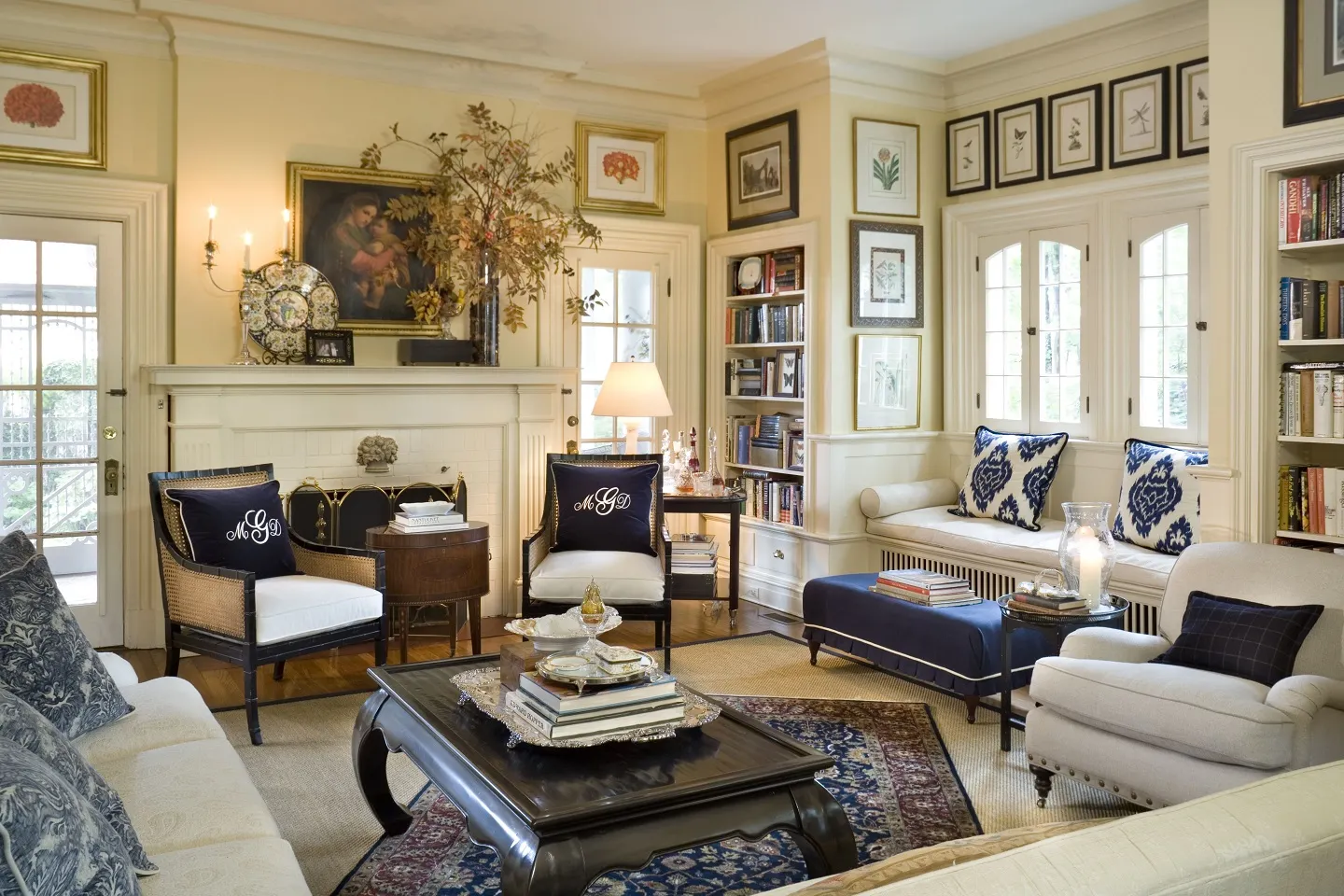
The most fascinating charm of vintage design is the ability to enable nostalgic sentiments in people. It is a reminder of a time when people deeply cared about craftsmanship and paid exceptional attention to details in contrast to modern times. Exposure to vintage elements slowly invites us to appreciate these details, such as carvings on a Victorian chair or the sleek lines of a Mid-century Modern sideboard. They help you connect the modern design’s fast-paced, eco-friendly nature to the authenticity of the past.
The vintage design also holds the power to create spaces that are deeply personal and reflective of individual tastes and stories. Whether incorporating inherited family heirlooms, scouring flea markets for unique finds, or carefully curating a collection of vintage artworks, each element in a vintage-inspired interior tells a tale. These spaces reflect our personalities, memories, and the things we love.
In a world where trends come and go, vintage design endures. It reminds us of the timelessness of beauty and the value of preserving the past. Vintage interior design goes beyond being a mere style. It celebrates enduring craftsmanship, artistic expression, and timeless design principles. It encourages us to imbue our living spaces with a rich historical narrative, a sense of refinement, and a hint of nostalgia. As a result, our environments become visually captivating, infused with meaning, and profoundly evocative.
Modern Vintage Interior Design

Modern vintage style is a harmonious blend of classic vintage elements with modern organic interior design sensibilities. It aims to create spaces that embrace the nostalgia and timeless beauty of the past while incorporating modern elements to ensure relevance and functionality in the present. This style often involves clean lines, minimalist aesthetics, and a focus on functionality, balancing old-world charm and contemporary appeal.
Blending vintage elements with contemporary design elements is key in modern interior design. This can be achieved by pairing vintage furniture pieces with modern accents, such as mixing a Mid-Century Modern sofa with sleek, minimalist side tables. It’s about creating a visual dialogue between old and new, allowing each element to complement and enhance the other. This fusion of styles brings a fresh perspective to vintage design, making it more accessible and adaptable to modern lifestyles.
Achieving a balance between old and new is essential in modern vintage interior design. It involves selecting vintage pieces that still serve a functional purpose and integrating them seamlessly into the overall design. By incorporating modern amenities and technologies into vintage-inspired spaces, such as hidden storage solutions or smart home devices, the space becomes aesthetically pleasing and practical for contemporary living.
Victorian Vintage Design
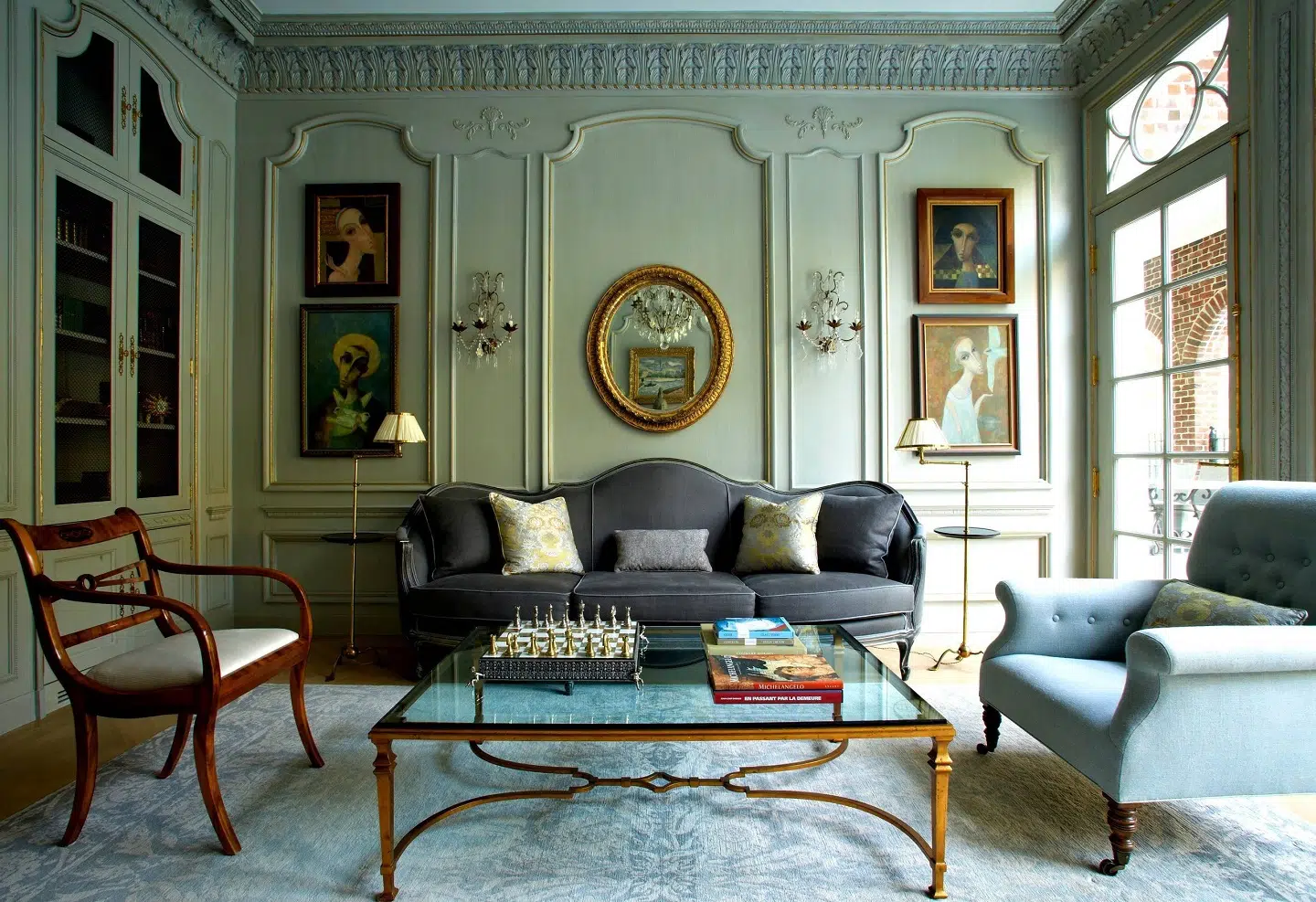
The vintage interior design draws inspiration from critical design periods and eras that have left an indelible mark on aesthetics. Understanding these influences helps us appreciate the richness and diversity of vintage design. Over time, various design styles have emerged, each with distinct characteristics. One notable era is the Victorian period, characterized by ornate details, opulent furniture, and a rich color palette. The Victorian design exudes a sense of grandeur and luxury, with furniture featuring intricate carvings and upholstery adorned with lush fabrics like velvet and silk.
Everyone can love Scandinavian interior design, due to its coziness and minimalist accent.
Art Deco Vintage Style Livingroom
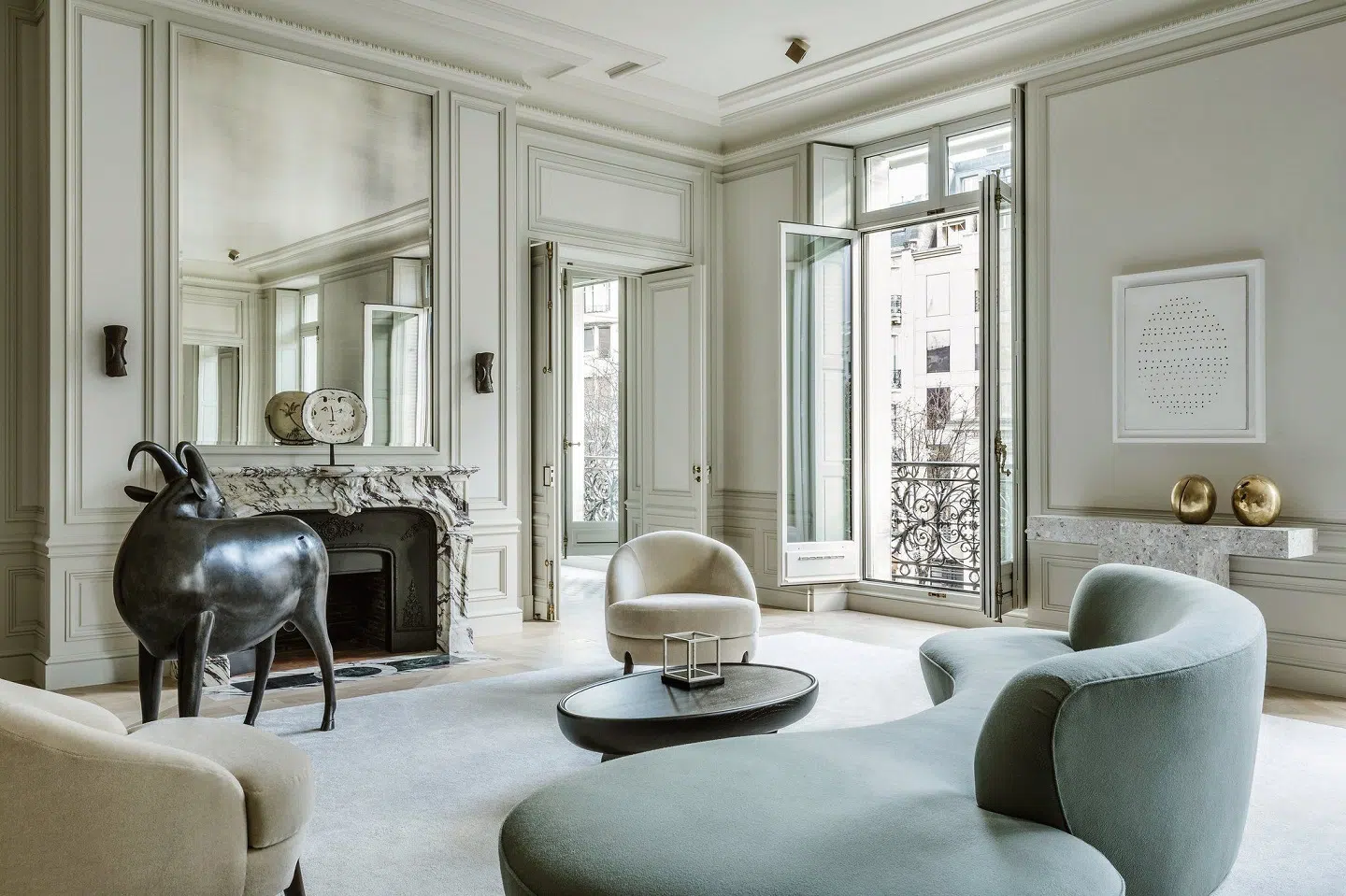
Another influential design style is Art Deco, which flourished in the 1920s and 1930s. Art Deco is known for its geometric shapes, sleek lines, and glamorous aesthetics. This style often incorporates chrome, glass, and lacquered wood, creating a sophisticated and chic ambiance.
Mid-Century Modern design emerged in the mid-20th century and remains immensely popular today. This style embraces simplicity, clean lines, and organic forms. Furniture from this era often features tapered legs, smooth curves, and the innovative use of materials like plywood and molded plastic. The bright colors, with teal, mustard, and natural tones, make a bold statement.
Key Elements of Vintage Interior Design
The key elements of vintage interior design are furniture, lighting, patterns, colors and materials. Vintage interior design and antique interior design furniture and style may seem similar, but they have totally different characteristics. We elaborate on each of vintage design elements below;
A. Vintage Style Livingroom Furniture and Décor
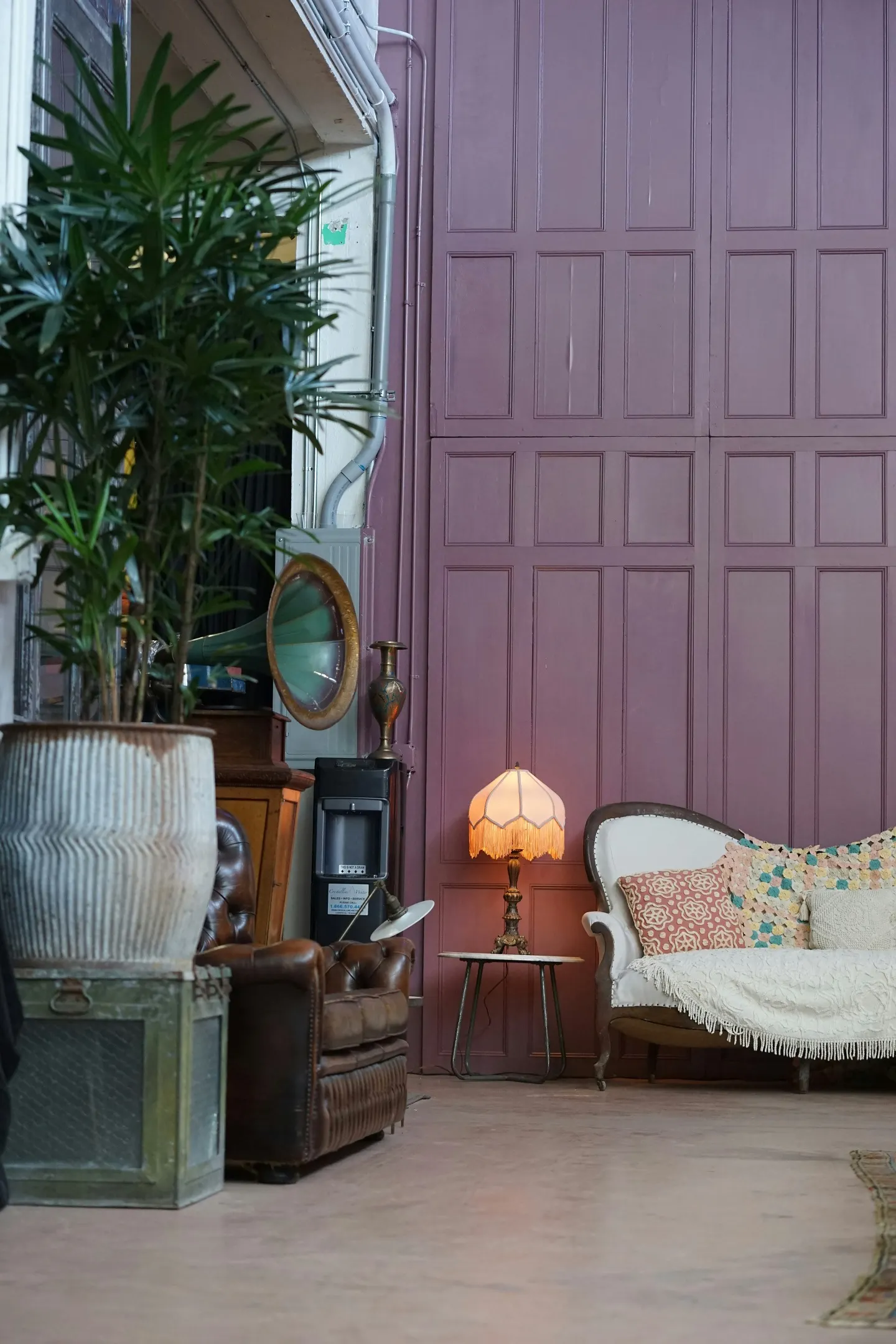
The vintage interior design revolves around carefully selecting furniture that reflects the desired era or style. Incorporating authentic vintage furniture not only adds character but also showcases the quality craftsmanship of the past. Alternatively, vintage-inspired or antique décor items can be incorporated to capture the essence of a specific era while providing more flexibility regarding availability and budget. Vintage interior furniture includes every furniture that are a symbol of a historical period, like a gramophone, walnut table, and ceramic services.
B. Victorian Vintage Color Palettes and Materials
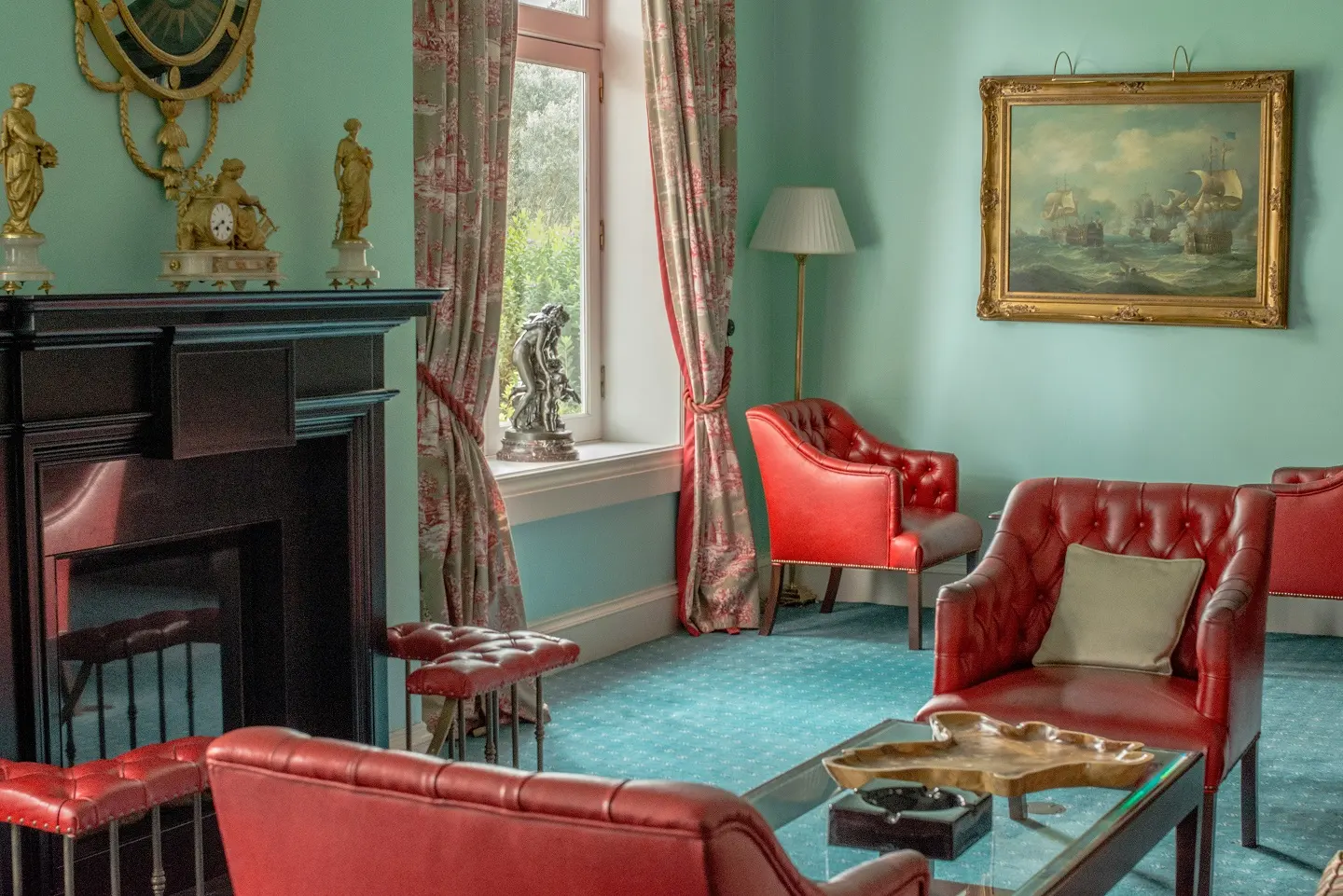
The color schemes used in vintage interiors vary depending on the referenced era. Victorian interiors often feature rich, deep hues like burgundy, forest green, and royal blue. At the same time, Art Deco favors bold and contrasting color combinations such as black and gold or white and silver. Mid-Century Modern designs embrace both vibrant and muted colors, with shades like avocado green, burnt orange, and teak brown being popular. To create an authentic and cozy feel, vintage interiors often incorporate natural materials like wood, leather, and metal.
C. Modern Vintage Patterns and Textiles
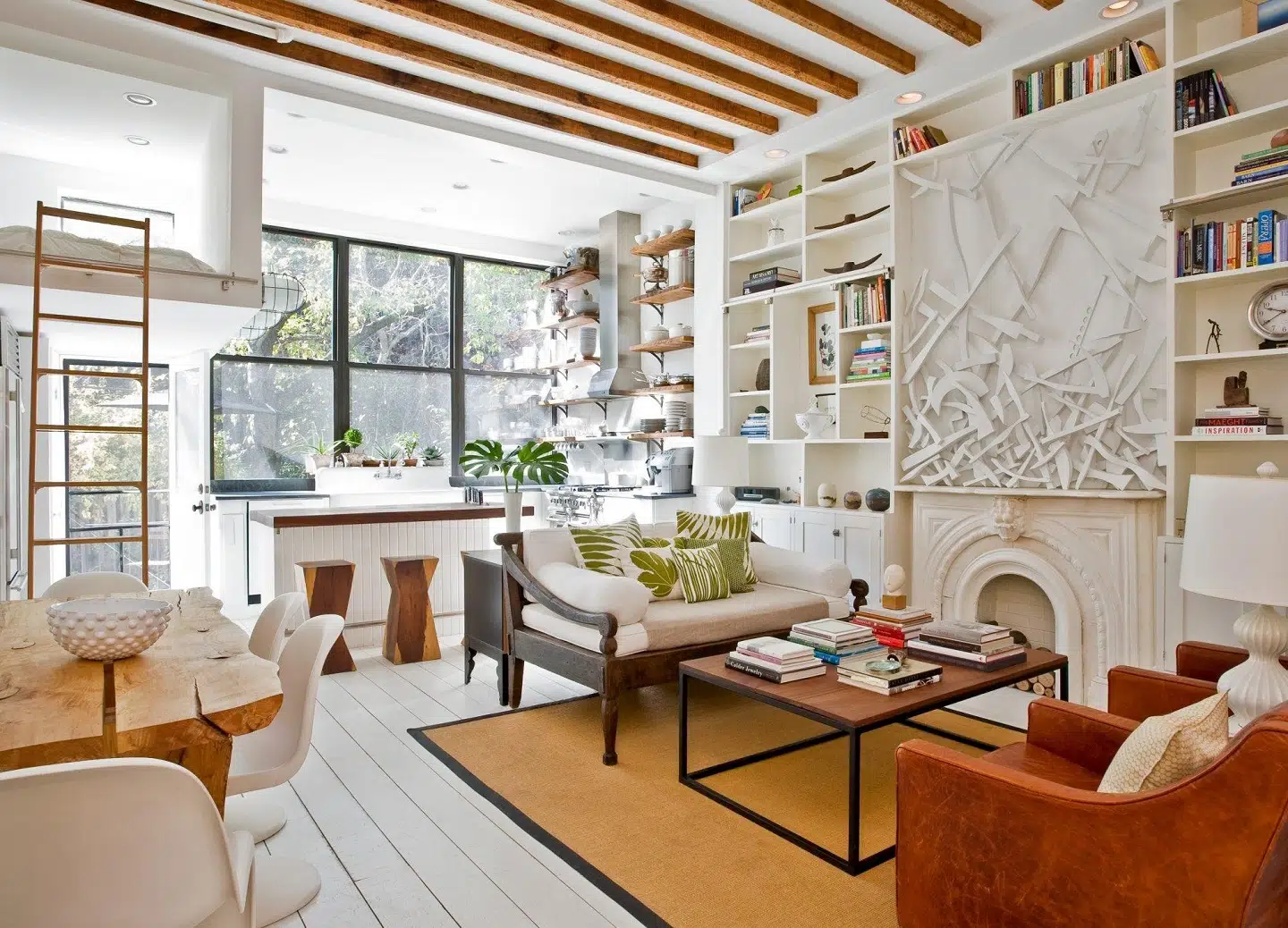
Modern-vintage-inspired patterns play a significant role in capturing the essence of different eras. Floral motifs, damask prints, and geometric patterns are common in vintage design. These patterns can be incorporated through wallpaper, upholstery fabrics, or decorative accents like throw pillows or curtains. Textiles also play a crucial role in vintage interior design. Different fabric choices can significantly impact the atmosphere of a space. Luxurious materials like velvet, brocade, and silk add elegance and sophistication, while natural fibers such as cotton and linen create a relaxed and casual feel.
D. Modern Vintage Lighting and Fixtures
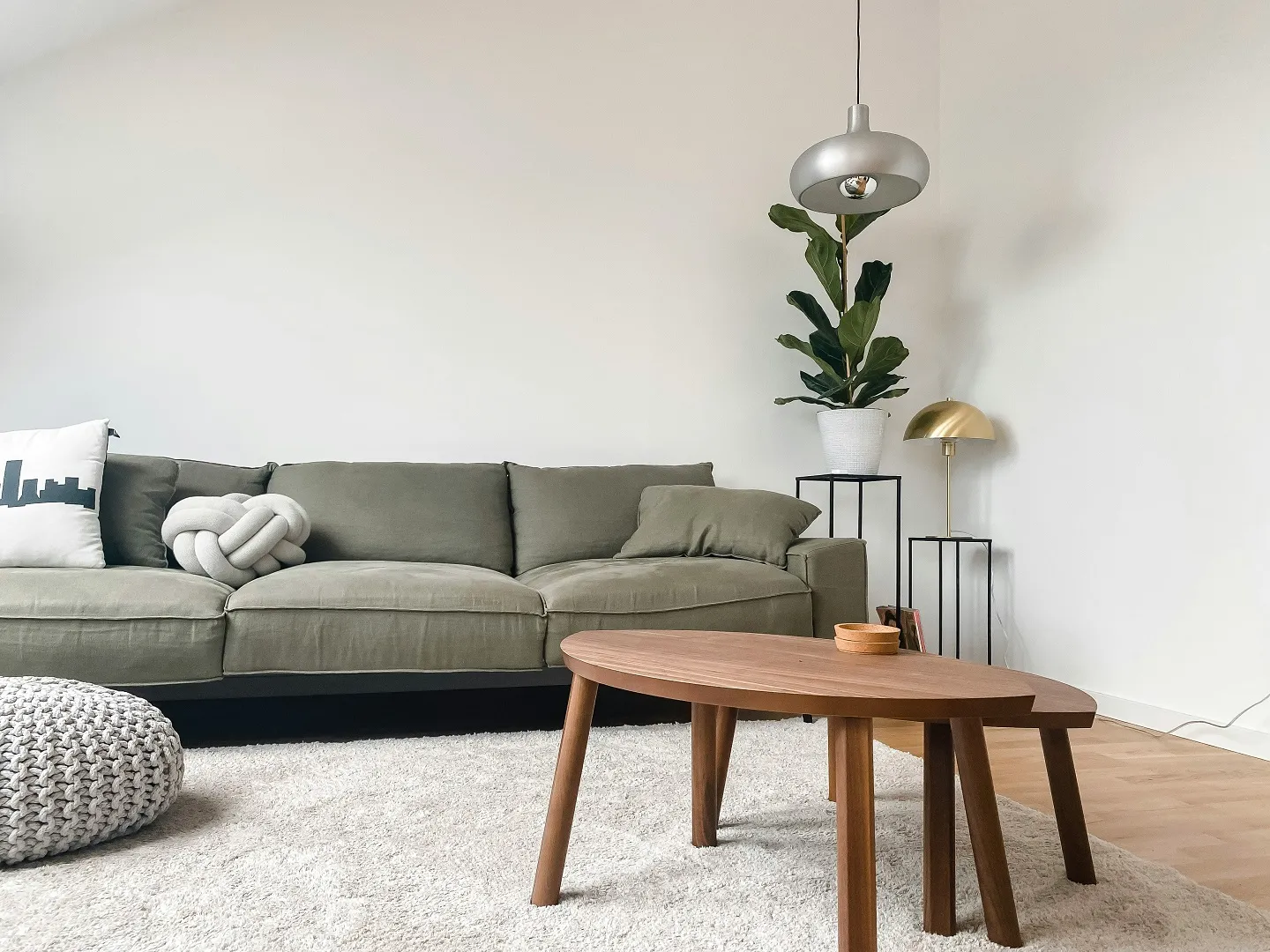
Vintage lighting options can serve as focal points in vintage interiors. With their intricate designs and cascading crystals, Chandeliers bring a sense of grandeur and elegance. Sconces, table lamps, and floor lamps can add vintage charm to the space. Vintage-inspired or retro fixtures, with their unique shapes and nostalgic aesthetics, offer a blend of classic design and contemporary functionality.
Incorporating these key elements of vintage interior design allows for creating spaces that exude timeless charm and a sense of nostalgia. By carefully curating furniture, selecting appropriate color schemes and materials, incorporating vintage patterns and textiles, and choosing lighting and fixtures that complement the overall aesthetic, one can achieve an authentic vintage ambiance that is visually captivating and evocative of the past.
Vintage Eclectic Décor

A vintage living room eclectic style is a design approach that embraces the freedom of mixing and matching different design styles, eras, and elements. It encourages creative expression and celebrates the beauty of individuality. This style is characterized by its unconventional combinations, where vintage pieces are seamlessly integrated with elements from various other design styles, such as industrial, bohemian, or Scandinavian. The result is a visually stimulating and highly personalized space.
Mixing and matching different design styles and eras is at the core of vintage eclectic décor. This can involve pairing a vintage Victorian chair with a contemporary geometric coffee table or combining a retro-inspired wallpaper with modern minimalist furniture. The key is creating a harmonious composition by balancing contrasting elements and finding common threads that tie the space together.
Vintage eclectic décor allows for unparalleled creative expression and personalization. It inspires people to create spaces showing their preferences, hobbies, and life experiences. It embraces personal mementos, found objects and eclectic artwork to create a space that tells a story and evokes a sense of nostalgia or adventure. Vintage eclectic interiors become a canvas for self-expression, enabling individuals to create spaces that reflect their personality and journey.
Vintage interior design characteristics
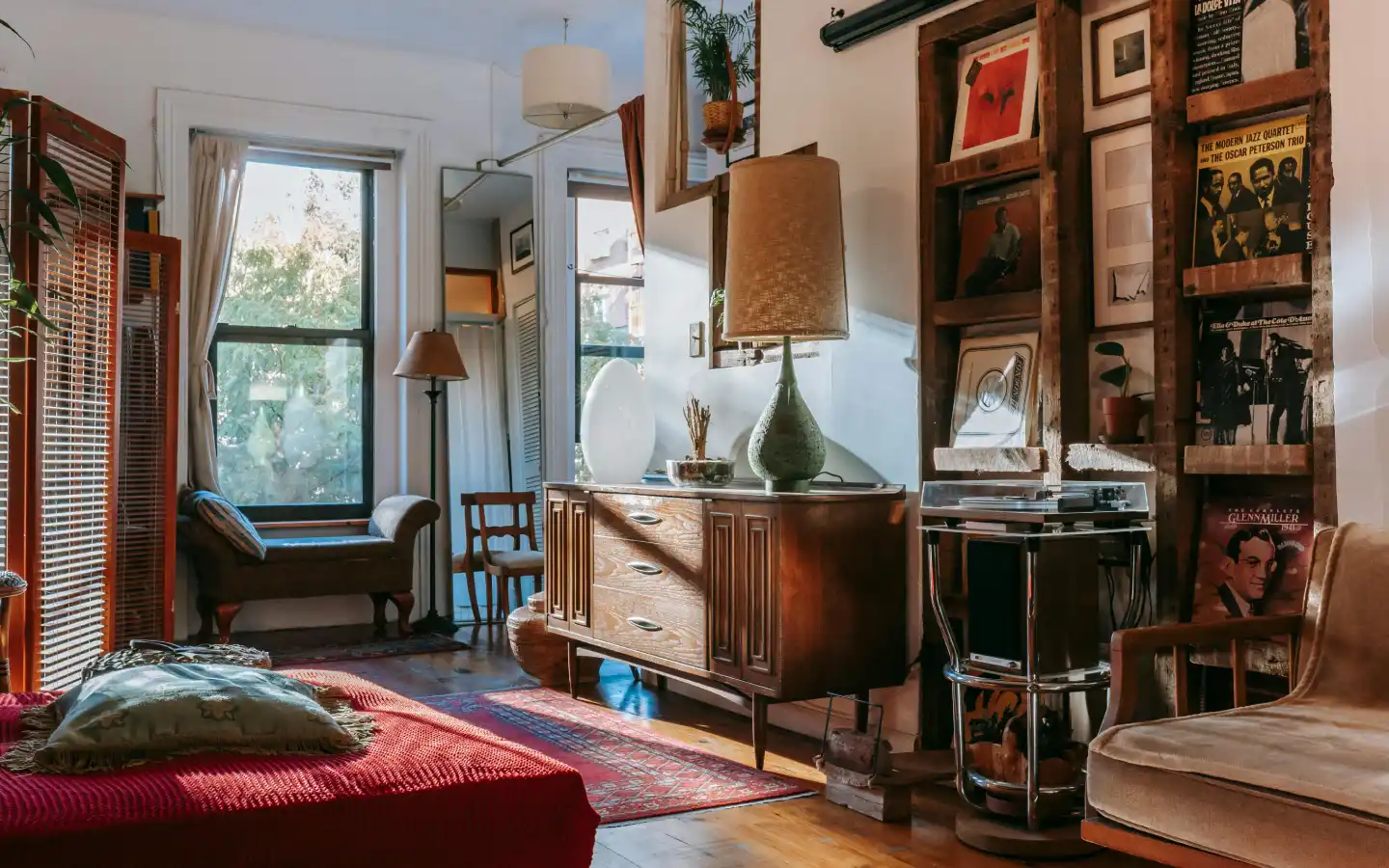
Vintage decorating is commonly accompanied by old furniture, colors, and accessories. Natural materials such as wood or fabrics like wool or cotton contribute to the vintage feeling. Depending on the era you’re going for, your material also varies. You can find what characterizes that era and add them to your design. For instance, let’s say you want the 50s nostalgia and spirit floating in your space; one of the main characteristics of 50s design was the iconic colorful kitchens with chrome countertops. The 1950s was the decade of embracing patterns and playing with them.
One of the most important features of vintage design is the presence of old and new simultaneously. The elegance and classic charm of older times, along with the comfort of modern times. The key point is to focus on a particular era or decade, and then you can freely combine patterns to bring nostalgia and uniqueness to different parts of your home.



Did you find what you were looking for?